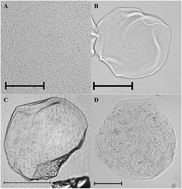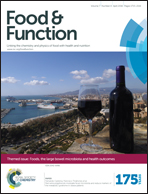Microencapsulation of probiotics in hydrogel particles: enhancing Lactococcus lactis subsp. cremoris LM0230 viability using calcium alginate beads†
Abstract
Probiotics are beneficial microbes often added to food products to enhance the health and wellness of consumers. A major limitation to producing efficacious functional foods containing probiotic cells is their tendency to lose viability during storage and gastrointestinal transit. In this study, the impact of encapsulating probiotics within food-grade hydrogel particles to mitigate sensitivity to environmental stresses was examined. Confocal fluorescence microscopy confirmed that Lactococcus lactis were trapped within calcium alginate beads formed by dripping a probiotic-alginate mixture into a calcium solution. Encapsulation improved the viability of the probiotics during aerobic storage: after seven days, less than a two-log reduction was observed in encapsulated cells stored at room temperature, demonstrating that a high concentration of cells survived relative to non-encapsulated bacteria. These hydrogel beads may have applications for improving the stability and efficacy of probiotics in functional foods.

- This article is part of the themed collections: Probiotics, Prebiotics and Gut Health and Foods, the large bowel microbiota and health outcomes

 Please wait while we load your content...
Please wait while we load your content...